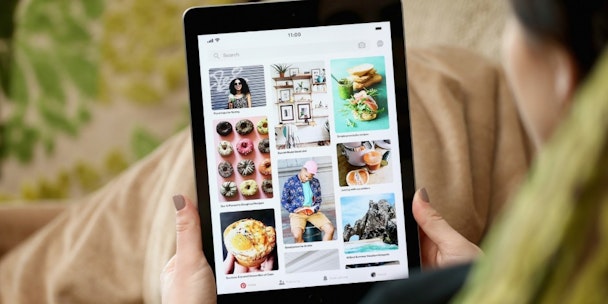The overlooked purchase power of Pinterest
While all the other social media platforms are involved in scandals and spats Pinterest has been quietly getting on with making itself thoughtful, relevant, engaging, and a major player in the social media arena when it comes to consumer purchasing-making decisions. Yet it remains an underrated tool. Marketers take heed, and work this platform into your strategy.

Impero question why Pinterest is so underused by brands and urge marketers to incorporate the platform into their strategies.
Outstanding growth
There’s no two ways about it, Pinterest is riding high right now.
After an initial public offering in April 2019 that raised around $1.5bn and lifted stock by around 60%, the network bagged over 300m active monthly users – double that of Twitter – making it a low-key front runner for the fastest growing social platform.
While it might not have the user base of other platforms, Pinterest has a unique and important offering when it comes to user mindset. 90% of weekly ‘Pinners’ use the platform to make purchase decisions – that’s higher than any other platform. Couple that with evolving visual search and e-commerce tools and there’s a lot to like.
So, where are the brands at?
The truth is, most brands are either neglecting or undervaluing Pinterest. Maybe because they think the user pool is too narrow. Or maybe they’re too busy chasing Gen Z (spoiler alert! They’re not on Pinterest).
Either way, if brands want to hedge their bets with a social media platform – or visual discovery tool – that’s likely to stay in favour with the masses long after the rest of the contenders have faded or matured, Pinterest is where it’s at.
Here’s why…
Taking a stand on fake news and misinformation
Like most social networks, Pinterest is built on an algorithm.
The code that underpins its algorithm isn’t dissimilar to that of Facebook, YouTube, Instagram or TikTok – yet Pinterest’s algorithm remains one of the least scrutinised. That’s not a coincidence: behind the scenes, Pinterest has been making a concerted effort to avoid the troubles that have plagued other social networks.
This summer, Pinterest made the headlines for taking a stance against the spreading of fake news. While Facebook was facing continued criticism for undermining public health (à la anti-vaxxing), Pinterest banned Live Action (a prominent US anti-choice activist group) and tweaked its algorithm to only surface results from major health organisations where vaccine-relating queries were concerned.
Flash forward to today and Facebook, which continues to make headlines for its inaction over misinformation, has seen its user base decline by 15m since 2017, according to Mashable. Pinterest, on the other hand, is seeing its user base grow exponentially.
The point here is that Pinterest is looking good right now – brands can feel good about advertising there and people can feel good about shopping there. What’s not to love?
Diversity and inclusion
Last April, Pinterest introduced a search feature that allows users to filter results by skin tone - making makeup and hair advice relevant to them. It's a small feature, but one that sends a strong message: You shouldn’t have to work harder to search Pinterest just because you're a person of colour.
Over the next ten years, Gen Z will grow in size and racial diversity to top todays minority into the majority – and these people need to see themselves in the products they’re buying.
Developing diverse and inclusive content is critical to ensuring a brand’s products are visible to a wider pool of consumers – look at L’Oréal, since using AR tech to showcase its products, reports that conversion rates tripled.
Putting people first
In October, Pinterest announced its ‘tune your home feed’ option, which allows people to tell the algorithm what to remember and, importantly, what to forget. The option aims to provide more overarching control – helping users enhance their on-platform experience.
Making Pinterest a place that people want to spend more time should, in theory, mean they’re engaging more with the brands that are using it. At the least, when every other algorithm out there seems to know better than you what you like and want to prioritise, this option is a breath of fresh air.
In short
It’s not every day that a social media network, or a search engine, can say they’ve had a good week. But the Pinterest party that we’re seeing right now tells us that there’s something to be said for the ethically minded and user-focused way that the company has grown.
It’s the first social media company that’s willing to take responsibility for the content on its pages and recognise that quality of content is as integral to user-experience as the interface that serves it.
Perhaps, though, the most alluring thing about Pinterest is that it’s undeniably, structurally, different. It’s not about just conversation, community or creation – it’s about inspiration, discovery and – let’s face it – shopping.
The fact that it’s also a place where people actually want to spend time makes Pinterest valuable to brands in a way that other platforms aren’t.
Savannah Dawsey-Hewitt, research and analysis at Impero.
Content by The Drum Network member:

Impero
Hello. We Are Impero.
The creative agency for impatient brands.
We're audaciously ambitious. We like to challenge the status quo by thinking bigger,...

